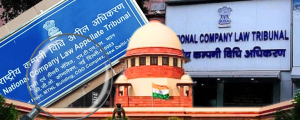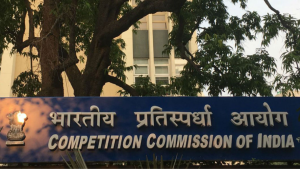

Linking of Land Records and E-courts
The digitisation of court records under the E-Courts Mission Mode project has enabled linking of court records with other official databases. The Department of Justice under the Union Ministry for Law and Justice has recently requested High Courts to provide clearance for linking of digitised judicial records, now housed in the National Judicial Data Grid (NJDG), with land record.[1] The benefits of linking judicial databases with other official (and non-official) databases has been supported as a major benefit of court digitisation.[2]
Court cases pertaining to property disputes form a significant proportion of litigation, and affect a large volume of people. Surveys of litigants found that 66 per cent of civil cases pertained to land and property,[9] and that 29 per cent of all cases were related to property.[10] Therefore, any steps taken to streamline the process of litigation relating to land and property will go a long way towards reducing delays in courts. Studies of land conflicts, with the scope of these expanded beyond legally contested disputes to include news reports, official documentation and primary sources, estimate that 65 lakh people were affected by 703 ongoing land conflicts in February 2020.[11]
Land records play an important role across a range of subject matter in litigation. This means that great benefits can be achieved by linking them with court records, for multiple reasons.
Cases pertaining to property are prone to significant delays. Land acquisition cases, which are a subset of all cases pertaining to land and property, were found to be pending for between 2.5 and 5.5 years in three districts in Maharashtra, and between one and 6.8 years in Karnataka, subject to the type of case.[3] In Bengaluru Rural district, land acquisition cases were found to be the type of civil case with the highest average disposal time (8.1 years), and the highest average duration for pending cases (6.5 years).[4] Cases which reach the Supreme Court of India have an average disposal time of 20 years.[5]
A large proportion of cases’ lifecycles are spent in taking evidence, and in awaiting the transfer of records from lower courts. Hearings pertaining to evidence take up an average of 36 per cent of a case’s lifecycle in subordinate courts, making it the longest stage on average.[6] The accuracy and authenticity of records plays an important part of this stage, and therefore having immediate access to an authoritative source of land records can help shorten this stage significantly. Delays in transfers of records can be a significant obstacle to the progress of a case. In 29,25,673 District courts, civil cases were found to spend an average of 398 days awaiting records from lower courts.[7] In Bengaluru Rural District, 54 per cent of pending land acquisition cases were pending in the ‘Notice/Summons/LCR’ stage.[8] Interlinking court databases with important government registries may facilitate a reduction in time spent in this stage if parties or the lower court were simply able to provide a unique ID or reference number to a court on appeal, enabling them to access the records directly. However, this would likely require significant amendments to court procedure.
There are issues inherent in both land records themselves, which have been replicated in their digital equivalents, as well errors resulting from the digitisation process itself.
Land records are maintained across many different departments and offices including the Registration Department, Revenue Department, and Survey and Settlement Department.[12] Each of these has a distinct role, and maintains their data in silos. The lack of coordination in record-keeping makes it harder to establish the authenticity of documents and to keep records accurate and up to date. The fact that data is kept in silos means that updates in one department may not be reflected in records maintained by the others.[13]
The current land records digitisation initiative, the ‘Digital India – Land Records Modernization Programme’, aims to move towards ‘conclusive titling’, a scheme by which the proof of property ownership would be held in records maintained by the government, who would guarantee its authenticity. This is in contrast to the present system, where transfer of land is recorded through a sale deed, but this is not sufficient to provide a legal guarantee of ownership.[14] In order to do this, it would have to unify records of transactions registered with the Registration Department, spatial records held by the Survey and Settlement Department, and Records of Rights and other documents held by the Revenue Department. Progress is being made in this area,[15] but merely unifying records would not help significantly until deeper issues with the maintenance of land records are addressed.
Poor maintenance of land records has led to inaccuracy, with divergence between spatial and textual records.[16] Land surveys, which should aim to rectify these inaccuracies, are outdated or incomplete in many parts of India. To take a more extreme example, large parts of Assam have never been surveyed.[17]
Without a cohesive, large-scale effort to improve the quality of land records themselves, the linking of databases cannot deliver their full benefits. In many examples, the issues with the content of land records are closely tied to issues of rights, processes of record-keeping which discriminate or otherwise disproportionately harm specific groups mean that land titles are not necessarily a fair reflection of legal entitlements and rights with respect to land. For example, women are often not granted land titles, as they have not been recognised as heads of households by local authorities.[18]
In addition, the legal processes for establishing their authenticity under the Indian Evidence Act, 1872, prevent people with legally recognised land rights from enforcing their claims by relying on land records alone.[19] This particularly affects forest dwellers who have rights to land under the Forest Rights Act, 2006.[20]
The lack of a dedicated data protection regime in India means there the process of linking databases should incorporate a transparent and participatory process of establishing privacy rights, security safeguards, and grievance redressal mechanisms with respect to information in these databases. This regime would, however, need to account for the transparency and
disclosure requirements that apply to judicial records if information from land records become a part of public judicial documents, such as judgments and orders. The digital divide in India means that third parties may potentially gain access to land records, while the people whom those records pertain to may not be able to access the records themselves; much less exercise data protection rights over them.[21]
The way forward in linking the NJDG to land records therefore requires clear rules and policies which regulate which information is shared, with whom, and under what circumstance. These policies should also provide digitally excluded people with a means of accessing records easily, such as through kiosks in offices of panchayats or municipal authorities. Efforts should be made to spread awareness about this. Linking databases would definitely help resolve property disputes more efficiently. However, given how many disputes result directly from inaccuracy, incompleteness, and outdatedness of records and the lack of documentation for people with land rights, the volume of disputes may not be affected until these issues are addressed.
[2] https://cdnbbsr.s3waas.gov.in/s388ef51f0bf911e452e8dbb1d807a81ab/uploads/2021/04/2021040344.pdf,
[3] https://www.dakshindia.org/wp-content/uploads/2020/09/LandAcquisitionReport_V4.pdf
[5] https://www.cprindia.org/news/understanding-land-conflict-india-and-suggestions-reform
[6] https://www.dakshindia.org/Daksh_Justice_in_India/19_chapter_01.xhtml#_idTextAnchor087
[7] https://www.indiabudget.gov.in/budget2019-20/economicsurvey/doc/vol1chapter/echap05_vol1.pdf
[9] https://www.dakshindia.org/wp-content/uploads/2016/05/Daksh-access-to-justice-survey.pdf;
[10]https://www.dakshindia.org/Daksh_Justice_in_India/12_chapter_02.xhtml#_idTextAnchor011
[12] https://prsindia.org/policy/analytical-reports/land-records-and-titles-india
[13] https://prsindia.org/policy/analytical-reports/land-records-and-titles-india
[14] https://dolr.gov.in/sites/default/files/Committee%20Report.pdf
[15] https://dilrmp.gov.in/faces/common/dashboard.xhtml
[16] https://prsindia.org/policy/analytical-reports/land-records-and-titles-india
[17] https://www.cprindia.org/policy-challenge/7872/regulation-and-resources
[18] NityaRao. 2017. Good Women do not Inherit Land’: Politics of Land and Gender in India. Routledge,.
[19] https://www.cprindia.org/policy-challenge/7872/regulation-and-resources
The views expressed in this article are solely those of the author’s and they do not represent the views of DAKSH.

Siddharth MandrekarRao
RECENT ARTICLES


Testing the Waters: Pre-Implementation Evaluation of the 2024 CCI Combination Regulations

Not Quite Rocket Science

Administration of justice needs an Aspirational Gatishakti

-
Rule of Law ProjectRule of Law Project
-
Access to Justice SurveyAccess to Justice Survey
-
BlogBlog
-
Contact UsContact Us
-
Statistics and ReportsStatistics and Reports
© 2021 DAKSH India. All rights reserved
Powered by Oy Media Solutions
Designed by GGWP Design